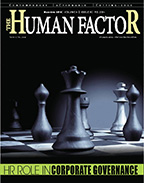Outwit, outplay, outlast ARE TEAM-BUILDING ACTIVITIES A LUXURY OR A NECESSITY FOR SENIOR EXECUTIVES? HOW CAN HR ENSURE THESE ACTIVITIES HELP LEADERS SURVIVE AND EMERGE VICTORIOUS OUT OF ANY CHALLENGE AS A TEAM? Issue Date - 01/04/2014 |
 Senior engagement in integrated activities Take it from Deepali Chaturvedi, team leader of Reed Singapore, who takes pride in herself on the achievement that her company has a low attrition rate, with only two employees leaving in the past two years. Having a close-knit, yet professional team, is something she has achieved through biannual team-building activities. To engage staff across the board, she created a team to organise these events with committees to take care of different aspects of the activity, so everyone has a voice. “We try to keep that balance and keep a consensus, because we have a good mix of boys and girls, and people are also less fit than others.” Recalling the company’s trip to Malaysia last year for go-karting, she sees team-building activities as a celebration of hard work and a reward for her team. “We want them to let loose, have fun and try something new,” she says. “We often come together and talk about the experiences we have had later on. That is a shared memory that we can all look back on and laugh about.” Abacus International, on the other hand, sees team-building as a more all-rounded activity that can be incorporated into annual corporate activities. The company holds an annual Abacus Seminar at the start of the year for its Singapore-based employees to celebrate the successes, recognise employees and learn the business goals. “We also take this opportunity to conduct team activities such as games and quizzes that are synchronised with key messages from our CEO,” Sim adds. Among other annually held activities are the Abacus Active Day, where employees undertake physical exercises to encourage work-life harmony, and the Abacus Family Day where employees can get to know more about their colleagues’ families. “Ultimately, the aim of the company is to engage all our employees in a variety of ways so that they are well taken care of,” Sim says. However, Kalabekov says not all senior executives are able to positively impact a team-building activity. ? The common types of roles senior executives tend to play are: ? The ‘guy next door’ – dressing appropriately for activities, participating and laughing the loudest to show their ‘human side’. ? The ‘observer’ – walking around during activities with supportive comments instead of participating. ? The ‘very important person’ – invoking fear in staff members assigned to their team, causing them to become resistant to speak their mind and do anything that might call attention to themselves. ? The ‘no-show’ – causing the event to either be postponed or does not attend it altogether because of a busy schedule, an overseas trip, or a last-minute appointment. Being the ‘guy next door’ or the ‘observer’ can serve the purpose of team-building, he says. However, if there is a ‘VIP’ or ‘no-show’, this will have the opposite effect. What types of activities, then, are most suitable for senior management? |
 Activities for senior management Where senior executives are involved, there is a need to strike a balance between the physical intensity and the cognitive difficulties of the activities. Etheris says problem-solving activities are most effective with senior leaders. “Designing the curriculum with moderate physical intensity is the way to go. The mix of activities can be done both indoor and outdoors. There is a need to provide time for debriefs where learners can reflect critically on what happened and its future implications for the team,” he says. The use of profiling tools among senior management can equip it with subtle and tacit information that is useful to the individual. When shared as a team, this information becomes more effective, allowing senior team members to share personal traits, behavioural preferences at work and their leadership styles to build closer relationships. “I completed a training programme recently for a group of civil servants. Towards the end of the day, one team member walked over and hugged another member. It puzzled me as the team had explained it had a nasty conflict prior to the session at the workplace,” Etheris says. Kalabekov advises that additionally, it is crucial to ensure the activity is both challenging and relatable to the participants. “Research tells us those events that are accompanied by familiarity results in a long-lasting learning moment. Simply by reflecting everyday office situations as a challenge in the team-building activity will trigger an emotional response, which will stick in their minds.” To achieve a lasting impact, HR must build a supportive culture within the company. “Team-bonding just once a quarter is not going to work. Everything has to be done on a day-to-day basis,” Chaturvedi stresses. “I believe a lot in putting the team together so they have a sense of a shared goal that everyone wants to accomplish together.” Team-building blunders What are the most common mistakes organisations make when planning team-building for senior executives? Overlooking risk-assessment Most team-building activities are experiential in nature, says Ebnu Etheris, founder of Teamwork Bound. Taking participants out of the classroom and into an environment requiring them to be physically and cognitively engaged are all laced with potential hazards that can easily injure participants. Insurance aside, injuring a senior executive is the last thing you would want to happen on a corporate retreat. “Sweating the small stuff” Organisers tend to get caught up in all the minor details such as the decorations, music, even the colour and fold of the napkins. “These are all important details but they are not the main focus. If the programme is well-planned, hardly anyone will remember the colour of the napkins,” says Gregory Kalabekov, director and lead facilitator of GRINESS Centre for Training and Development. Over emphasising on budget While it is convenient and cost-effective to buy an off-the-shelf product, does this really achieve the internal change you want? While it may appear more expensive to invest in a tailor-made solution, Robert Rigg, Bamboo’s founder, says it could solve 95% of the issues the company has. Quality costs – fact. |
Mabel Tan
|



